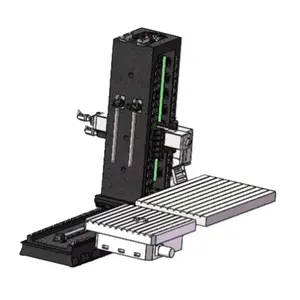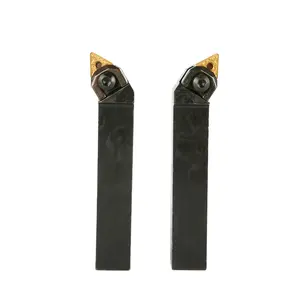Introduction to Boring Bars
Boring bars are essential tools in the machining industry, designed for enlarging holes and refining the internal diameter of workpieces. These precision instruments come in various shapes and sizes to accommodate a multitude of machining tasks. The selection of a boring bar is critical as it directly impacts the finish and accuracy of the machining process.
Types and Applications
The utility of boring bars extends across different types, each suited for specific applications. Solid bars are typically used for general boring operations, while anti-vibration bars are favored for deeper boring due to their ability to suppress chatter, enhancing the surface finish. The choice of a boring bar also depends on the material being machined and the intricacy of the operation, whether it is for simple hole enlargement or complex contouring within a workpiece.
Features and Materials
Boring bars are crafted from a variety of materials, each selected for its performance under certain conditions. Carbide-tipped bars are prevalent for their ability to maintain hardness at high temperatures, making them suitable for high-speed cutting operations. Other materials include high-speed steel and diamond-tipped tools, which offer durability and precision. The design of a boring bar often includes features such as coolant channels to enhance chip evacuation and reduce heat buildup during cutting.
Advantages of Precision Tools
The advantages of using a well-crafted boring bar are manifold. These tools enable the creation of precise internal profiles and can achieve tight tolerances. Their adjustability in terms of depth and location allows for versatility in machining, facilitating the creation of complex internal geometries. Moreover, the ease of changing cutting inserts or tips contributes to efficient machining processes, reducing downtime and increasing productivity.
Selection Considerations
When selecting a boring bar, it is crucial to consider the compatibility with the workpiece material and the type of machining center being used. The rigidity of the bar, the quality of the insert, and the overall design impact the tool's performance and the outcome of the machining operation. It is important to choose a tool that aligns with the specific requirements of the task at hand to ensure optimal results.
Enhancing Machining Efficiency
In conclusion, the right boring bar can significantly enhance the efficiency and precision of machining operations. With a comprehensive range of options available, it is possible to select tools that offer the desired balance between performance and cost-effectiveness. For those involved in machining, the investment in a suitable boring bar is a step towards achieving higher standards of workmanship.











































 浙公网安备 33010002000092号
浙公网安备 33010002000092号 浙B2-20120091-4
浙B2-20120091-4